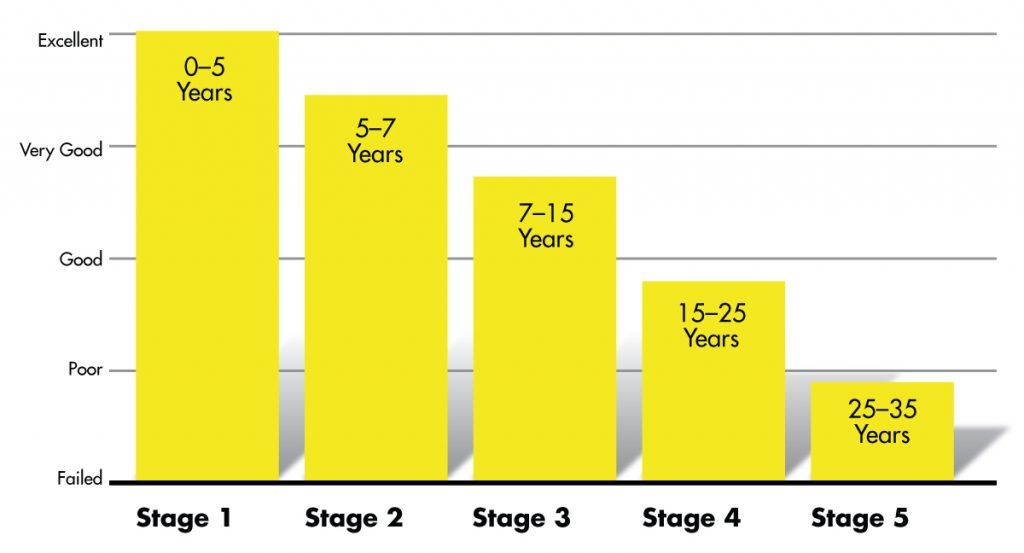What is the life expectancy of an asphalt driveway or parking lot?

Asphalt is a popular choice for roadways and pavements due to its durability, flexibility, and cost-effectiveness. However, like any material, asphalt has a finite lifespan and requires maintenance to ensure its longevity. With many factors leading to the life expectancy of asphalt including climate, traffic, and maintenance, w well maintained asphalt assets should last from 25-35 years. Keep reading as we will discuss the life cycle of asphalt, when it should be repaired, and when it should be replaced.
When Do I know My Asphalt Needs Maintenance Work?
There are several signs that indicate when your asphalt may need maintenance work. Here are some common indicators to look out for:
- Cracks: If you notice cracks in your asphalt pavement, it is a sign that it may need maintenance work. Cracks can occur due to weathering, age, or heavy traffic, and they can worsen over time if left untreated.
- Potholes: Potholes are a more serious form of damage to asphalt and can be caused by water seepage or heavy traffic. If you notice potholes in your pavement, it is important to have them repaired as soon as possible to prevent further damage.
- Fading color: Over time, asphalt can fade and lose its dark color. This is a sign of oxidation and may indicate that your pavement is vulnerable to water damage and cracking.
- Drainage issues: Poor drainage can lead to water pooling on your pavement, which can cause damage over time. If you notice standing water on your pavement, it is a sign that your drainage system may need to be improved.
- Rough texture: As asphalt pavement ages, it can develop a rough texture due to wear and tear. This can make it harder to walk or drive on and can also increase the risk of damage to your pavement.
If you notice any of these signs, it is a good idea to have your pavement inspected by a professional like Omega. A skilled asphalt maintenance company can assess the condition of your pavement and recommend the appropriate maintenance work needed to ensure it remains in good condition. Regular maintenance can help extend the life of your pavement and prevent costly repairs down the line.
Does Weather Have an effect On Asphalt Life?
The short answer: yes. Weather has a significant effect on the life of asphalt. Extreme temperatures, precipitation, and UV exposure can all cause damage to asphalt pavement over time. Here are some ways in which weather can impact the life of asphalt:
- Extreme temperatures: Asphalt pavement can expand and contract due to changes in temperature. This can lead to cracks, fissures, and other forms of damage to the pavement. Additionally, extreme temperatures can cause the asphalt to become brittle and more susceptible to cracking and breaking.
- Precipitation: Rain, snow, and ice can all cause damage to asphalt pavement. Water can seep into cracks and cause the asphalt to deteriorate over time. Additionally, freeze-thaw cycles can cause the pavement to heave and crack.
- UV exposure: The sun's UV rays can cause the binder in asphalt to break down over time. This can lead to a loss of flexibility in the pavement and make it more prone to cracking and other forms of damage.
- Wind: Strong winds can cause debris and other objects to fly around, which can damage the surface of the asphalt pavement.
Overall, weather can have a significant impact on the life of asphalt pavement. To minimize the effects of weather on your asphalt pavement, it is important to perform regular maintenance, such as crack sealing, pothole repair, and sealcoating. Additionally, using high-quality asphalt materials and ensuring proper installation can also help extend the life of your pavement.
